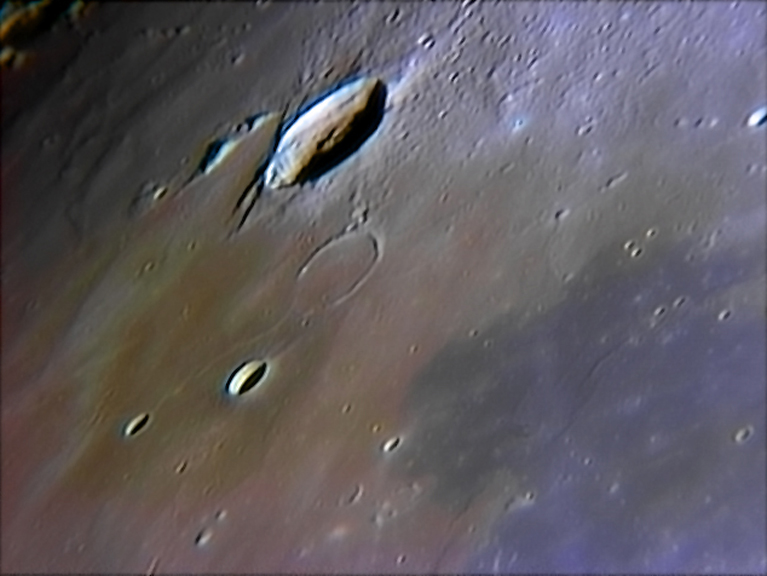
image by Zac Pujic
The Earth from space is full of color. Green comes mostly from vegetation, the atmosphere is blue, gold to red (at sunset), white (clouds) and brown (smoke and pollution), and the sea is dark blue. Deserts are often reddish because the atmosphere has rusted iron in the rocks, and ice and snow are white. The Moon is two-tone, only with shades of dark and light. Or so we often think. But as Zac says: I am constantly amazed that others do not image the moon in colour. The status quo effect achieved by Lunar Orbiter images is such that amateurs seem to think that the moon is devoid of colour. Some even think that my images are false colour images. Yet ToUcam webcam images amply reveal colour variations on the moon even without saturating the colours in photoshop to make them more visible. I see extraordinarily detailed images taken by people intent on discarding such interesting data, insisting that the moon is black, white and grey. Today’s image documents his point. The northern end of Oceanus Procellarum has some of the strongest color boundaries on the Moon. The bluish-gray mare to the right is young, titanium-rich lava called the Sharp Formation. At least some of these lavas erupted from the Sharp Rille in Sinus Roris. The Sharp lavas partially cover the pinkish Telemann Formation lavas that are older and low in titanium-content. And the deep brown mare south of the crater Markov is lava under the Telemann that was scattered across the surface as ejecta from the two young impact craters in the bottom left quadrant. Quite a complex, but decipherable story to come from a simple webcam!
Chuck Wood
Technical Details:
9 June 2006. 31-cm Newtonian at f/28 + Phillips ToUcam Pro webcam.
Related Links:
Rükl plate 1
Zac’s website
Now you can support LPOD when you buy ANY book from Amazon thru LPOD!
COMMENTS?
Click on this icon File:PostIcon.jpg at the upper right to post a comment.



